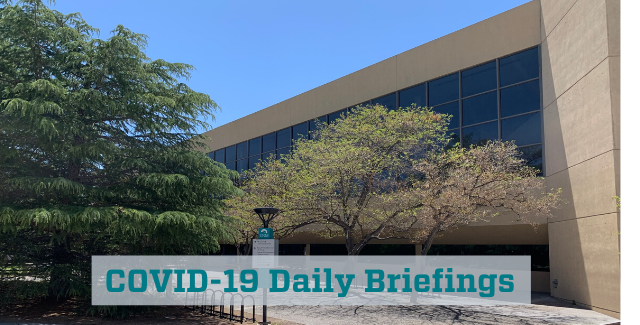Document Type
Brief
Publication Date
4-21-2020
Abstract
Executive Summary:
NM updates. YesNM assistance. Ventilator production. Georgia reopening. Wisconsin legal challenge. Pending immigration suspension. Religious restriction parity. Hong Kong restrictions. Global food shortages. Mexico rapid spread. Oil futures negative. Socio-economic implications. Clinical disease patterns. Healthcare worker testing. WHO courses. Vaccine volunteers to be infected. Intervention impacts. Social distancing tribal. NIH releases treatment guidelines. Guidelines on: thromboembolism Tx, IBD endoscopy, vascular surgery, nutritional management, cutaneous lymphomas, cardiac surgery triage, cellular therapy. LA has 40X known cases. At-home testing. ELISA diagnostic tool. CRISPR vs. PCR. Testing coordination. Hydroxychloroquine prophylaxis. VA hydroxychloroquine study. 52 new clinical trials. Coagulation disorders. Cardiac injury. Ansomia features. D-dimer risk. Early warning scores. Artificial intelligence review.
Recommended Citation
Lambert, Christophe G.; Shawn Stoicu; Lori D. Sloane; Anastasiya Nestsiarovich; Praveen Kumar; Nicolas Lauve; Hannah Groves; Rachel D. King; Alexandra Yingling; Jenny Situ; Allison Price; LynnMarie Jarratt; Ariel Hurwitz; Shahad Hersi; Ryen Ormesher; Samuel Anyona; Perez Olewe; Elly Munde; Cristian Bologa; Kristine Tollestrup; Orrin Myers; Gregory Mertz; Ingrid Hendrix; and Douglas J. Perkins. "2020-04-21 DAILY UNM GLOBAL HEALTH COVID-19 BRIEFING." (2020). https://digitalrepository.unm.edu/hsc_covid19_briefings/18


Comments
Disclaimer: The UNM Global Health COVID-19 Briefing is provided as a public service. Sources include not only peer-reviewed literature, but also preliminary research manuscripts that have not been peer reviewed along with lay news media reports. The peer-review process often results in manuscript improvement, with corrections made for errors and unsubstantiated conclusions being corrected. Furthermore, many headlines and summaries in the briefing are written by student volunteers and others who may lack subject matter expertise in this rapidly evolving field. As such, the headlines and summaries should not be regarded as conclusive. Instead, readers are encouraged to use the briefing to identify areas of interest and then use the embedded links to read and critically evaluate the primary sources.